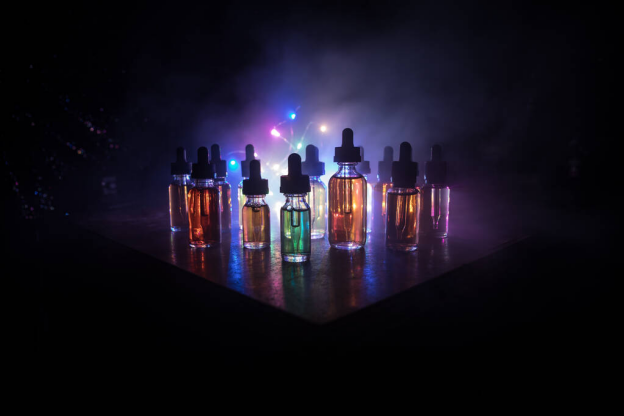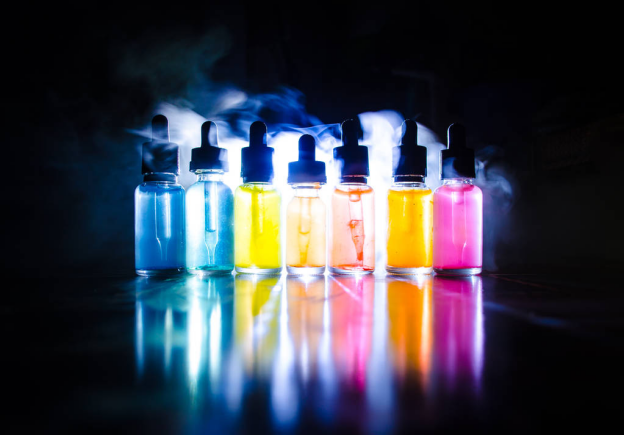Vape liquid, known by various names such as e-liquid or e-juice, constitutes a pivotal facet of the vaping encounter. Within the realm of vaping, this liquid amalgamation encompasses constituents like propylene glycol or vegetable glycerin, flavouring agents, and nicotine. A diverse spectrum of flavours and nicotine concentrations characterizes vape liquids, some even devoid of nicotine. The array of flavours permits users to delve into various types, seeking the one that impeccably harmonizes with their palate. Whether an individual embarks on the vaping journey anew or has traversed it for an extended duration, the process of selecting the suitable vape liquid can be rather overwhelming, albeit the diligence invested is unequivocally rewarding.
The Historical Voyage of Vape Liquid
The surge in popularity of vaping has transpired in recent years, encompassing a plethora of vaping mechanisms ranging from vape pens to e-cigarettes. An integral facet within this milieu is the vape liquid in NZ, often recognized as e-liquid or e-juice. Constituted primarily by propylene glycol (PG) and vegetable glycerin (VG), this liquid infusion incorporates flavour enhancements and nicotine content, contingent on individual preferences. An exploration into the annals of vape liquid’s evolution since its inception in 2003 reveals a transformative narrative.
A Chinese pharmacist named Hon Lik ushered in the era of commercially available electronic cigarettes in 2003, birthing the prototype. This electronic cigarette, comprising three constituent elements—battery, atomizer, and an absorbent medium imbued with a nicotine solution, dubbed “e-liquid” or “vape juice,” swiftly garnered traction among smokers seeking alternatives to conventional tobacco consumption devoid of smoke or tar inhalation.
The voyage of vape liquid has been defined by technological advancements, rendering the tailoring of vaping experiences via diverse flavours and nicotine intensities a simplified endeavour, the fruits of which are manifest in contemporary times.
Categories of Vape Liquid
Over the recent span, the ascendancy of vaping has become conspicuous. This avenue not only provides a conduit to savour flavours and sensations that elude traditional cigarettes but also encompasses an intricately woven tapestry of vape liquid categories. Comprehending these categories is pivotal to extracting the quintessence of the vaping escapade.
At the forefront lies e-juice or e-liquid—a versatile liquid variant fueling an assortment of vaping platforms, ranging from cigarrete likes and pens to box mods and tanks. The composition typically incorporates propylene glycol (PG) or vegetable glycerin (VG), nicotine, flavouring agents, and occasionally supplementary additives like sweeteners or colourants. The interplay of PG and VG determines the density of exhaled vapour, while nicotine concentrations traverse a spectrum from 0mg/ml to levels as high as 24mg/ml in certain cases.
The second echelon comprises CBD oil or hemp oil extract—a substance characterized by elevated concentrations of cannabidiol (CBD), a non-psychoactive component derived from cannabis plants. This compound has garnered attention due to its potential
Merits Inherent in Vape Liquid
As the past decade unfurled, vaping etched its ascendancy as a conduit for nicotine indulgence devoid of the deleterious ramifications linked to traditional smoking. This epoch witnessed the evolution of vape liquids, engineered to bestow an enriching experience while preserving the merits akin to conventional cigarettes. This discourse unfurls the virtues intrinsic to vape liquid, illuminating its status as an increasingly favoured alternative to smoking.
Primarily, vape liquid emerges as an orchestra of flavours, elevating the vaping odyssey. Whether one’s palate craves fruity exuberance, menthol’s cool embrace, or the traditional warmth of tobacco, a cornucopia of options stands at the ready, empowering users to craft personalized flavour symphonies. The diversity extends to the extent of customized amalgamations, culminating in a bespoke blend tailored to individual preferences.
Secondarily, vaping sidesteps the perils accompanying traditional smoking, as it eschews the generation of smoke and tar, pervasive within conventional cigarettes. Vape liquids encompass solely nicotine and vaporizable constituents, circumventing the combustion integral to regular cigarettes. This paradigm shift slashes the risk of respiratory afflictions, including lung cancer, attributed to the inhalation of smoke and tar. Furthermore, the absence of secondhand smoke amplifies the safety quotient, permitting usage in the proximity of kin and comrades minus any secondhand smoke-related apprehensions.

Unveiling the Potential Perils of Vaping
The recent zeitgeist has witnessed vaping ascend as a favoured surrogate for cigarette smoking. While it often garners the mantle of a safer alternative, the landscape remains fraught with latent hazards associated with vaping, warranting circumspection before embracing this pursuit.
Central to e-cigarettes and analogous vaping apparatuses is e-liquid or vape juice—an amalgam that comprises nicotine, flavouring agents, and other chemical constituents, crafting an inhalable aerosol. Regrettably, the enduring repercussions of these elements on human well-being remain largely uncharted. Select studies posit the potential for respiratory irritation and cellular impairment consequent to sustained inhalation of some vape juice components. The underlying risk also extends to nicotine itself, capable of fomenting addiction and amplifying the propensity for heart maladies and strokes with protracted usage and heightened doses.
Beyond the perils emanating from vape juice components, concerns converge upon the apparatuses housing them. Shoddily manufactured batteries or defective components can precipitate conflagrations or explosions, compounding the need for conscientious handling and procurement from reputable sources. Additionally, a subset of research suggests that secondhand exposure to vapour engendered by these devices could harbour elevated levels of Vape liquid, as an alternate avenue to conventional cigarettes, has garnered escalating favour in contemporary times. Its popularity is predicated upon a medley of attributes—ranging from an expansive array of flavours to convenience and cost-effectiveness. However, a salient caveat necessitates vigilance: the paramount importance of sourcing high-quality vape liquid devoid of deleterious compounds. By embracing this tenet, enthusiasts can relish their vaping sojourn while safeguarding themselves against latent health hazards intertwined with subpar vape liquids.

